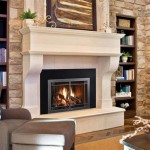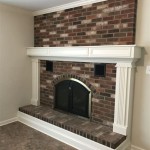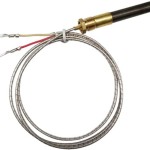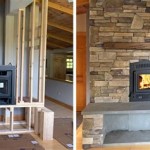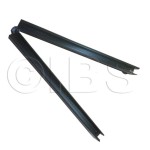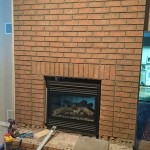Fireplace Tool Kits: Essential Companions for a Crackling Hearth
A fireplace can be a focal point of warmth and ambiance in a home, providing a comforting gathering space during colder months. However, enjoying a fire safely and efficiently requires more than just wood and a match. A comprehensive fireplace tool kit is essential for maintaining the fire, cleaning the hearth, and ensuring a safe and controlled burning environment. These kits typically include a selection of implements designed for specific tasks, allowing the user to manage the fire with ease and precision.
The contents of a fireplace tool kit can vary depending on the manufacturer and intended use, but several core tools are consistently included. These tools are designed to withstand high temperatures and frequent use, typically crafted from durable materials such as wrought iron, steel, or brass. The choice of materials and design often reflects not only functionality but also the aesthetic of the fireplace itself, with many kits offering a decorative complement to the hearth.
Understanding the Core Components of a Fireplace Tool Kit
The effectiveness of a fireplace tool kit lies in the functionality of its individual components. Each tool serves a distinct purpose, contributing to the overall safety and efficiency of managing a fire. Understanding the role of each tool is crucial for effectively using and maintaining a fireplace.
The Poker: Perhaps the most recognizable tool in the kit, the poker is a long, metal rod with a hook or point at one end. Its primary function is to rearrange burning logs within the fireplace. This allows for optimal airflow, ensuring complete combustion and reducing the buildup of creosote, a flammable substance that can accumulate in the chimney. The poker is also useful for breaking up stubborn embers and coals, facilitating faster burning or extinguishing.
The Shovel: The shovel is a broad, flat scoop typically made of metal. Its purpose is to remove ashes and debris from the fireplace. Regular removal of ashes is important for maintaining proper airflow and preventing ash buildup, which can impede the burning process. The shovel also helps to keep the hearth clean and prevents the spread of ash and soot into the surrounding living space. The capacity and design of the shovel can vary, with some shovels featuring high sides to prevent spills and others designed for maneuverability in tight spaces.
The Tongs: Fireplace tongs are designed for gripping and manipulating logs with greater control than the poker allows. They consist of two arms connected by a pivot point, allowing the user to grasp logs securely and reposition them in the fire. Tongs are particularly useful for adding larger logs to the fire without disturbing the existing embers or coals. They also provide a safer way to retrieve partially burned logs that may have rolled out of position.
The Brush: The fireplace brush, also known as a hearth brush, is used to sweep up ash, soot, and debris from the hearth. It typically features stiff bristles made of natural or synthetic materials, designed to effectively remove fine particles without scratching the hearth surface. A well-maintained brush helps to keep the fireplace area clean and prevents the spread of dust and allergens throughout the home. Some brushes also include a long handle for reaching difficult-to-access areas.
Material Considerations and Durability
The longevity and performance of a fireplace tool kit are heavily influenced by the materials used in its construction. Fireplace tools are subjected to high temperatures and physical stress, so durable and heat-resistant materials are essential for ensuring their reliability and safety.
Wrought Iron: Wrought iron is a traditional material for fireplace tools, prized for its strength, durability, and heat resistance. It can withstand high temperatures without warping or bending, making it an ideal choice for pokers, tongs, and shovels. Wrought iron also develops a natural patina over time, adding to its aesthetic appeal. However, wrought iron can be susceptible to rust if not properly maintained, requiring occasional cleaning and oiling.
Steel: Steel is another common material for fireplace tools, offering a balance of strength, durability, and affordability. Stainless steel is particularly resistant to rust and corrosion, making it a popular choice for shovels and brushes. Steel tools are often coated with a protective finish to further enhance their durability and prevent oxidation. The quality of the steel used can vary, so it’s important to choose tools made from high-grade materials for optimal performance.
Brass: Brass is often used for decorative elements in fireplace tool kits, adding a touch of elegance and sophistication. While brass is not as strong or heat-resistant as wrought iron or steel, it can be used for handles, finials, and other non-critical components. Brass is also resistant to corrosion, making it a durable and visually appealing choice for accents and trim.
Wood: Wood is sometimes used for handles on fireplace tools, providing a comfortable and ergonomic grip. However, wood handles must be carefully selected and treated to withstand the heat radiated from the fire. Hardwoods such as oak or maple are typically used, and they are often coated with a heat-resistant finish to prevent cracking or charring. It is crucial to ensure that wood handles are securely attached to the metal tool to prevent them from loosening or separating during use.
Maintenance and Safety Practices
Proper maintenance is crucial for extending the lifespan of a fireplace tool kit and ensuring safe operation. Regular cleaning and storage can prevent rust, corrosion, and damage, while adherence to safety guidelines will minimize the risk of burns and other accidents.
Cleaning: After each use, fireplace tools should be cleaned of ash, soot, and debris. A wire brush or steel wool can be used to remove stubborn deposits from metal surfaces. Wrought iron tools should be lightly oiled after cleaning to prevent rust. Brass components can be polished with a brass cleaner to maintain their shine. Brushes should be cleaned with a mild detergent and water, and allowed to air dry completely.
Storage: When not in use, fireplace tools should be stored in a designated stand or rack. This helps to keep them organized and prevents them from being knocked over or damaged. The stand should be placed in a safe location away from foot traffic, especially children and pets. Storing the tools near the fireplace can also help to preheat them before use, reducing the risk of thermal shock when exposed to high temperatures.
Safety Precautions: Always wear heat-resistant gloves when handling fireplace tools, especially when the fire is burning. This will protect your hands from burns and prevent you from dropping the tools. Never leave a fire unattended, and always ensure that the fire screen is properly in place to prevent sparks from escaping. Keep a fire extinguisher nearby in case of emergencies. Regularly inspect the chimney for creosote buildup, and schedule professional cleaning as needed to prevent chimney fires.
The selection of a fireplace tool kit is an investment in the safety and enjoyment of a home’s hearth. By understanding the function of each tool, considering the materials used in their construction, and adhering to proper maintenance and safety practices, homeowners can ensure that their fireplace remains a source of warmth and comfort for years to come.

Antiqued Brass Fireplace Tool Set Reviews Crate Barrel

Uniflame 5 Piece Antique Copper Fireplace Tool Set F 1311 The Home Depot

4 Piece Bend Raw Steel Standing Fireplace Tool Set Reviews Cb2

Forged Iron Fireplace Tool Set Western Passion
.jpg?strip=all)
20 Best Fireplace Accessories And Tools Architectural Digest

Fireplace Tool Set With Stand Z 27

Ping For Fireplace Tools The New York Times

4 Piece Bend Stainless Steel Standing Fireplace Tool Set Cb2

Craftsman Fireplace Tool Set Pilgrim Home Hearth

Town And Country Fireplace Tool Set Wrought Iron Four Tools
Related Posts

